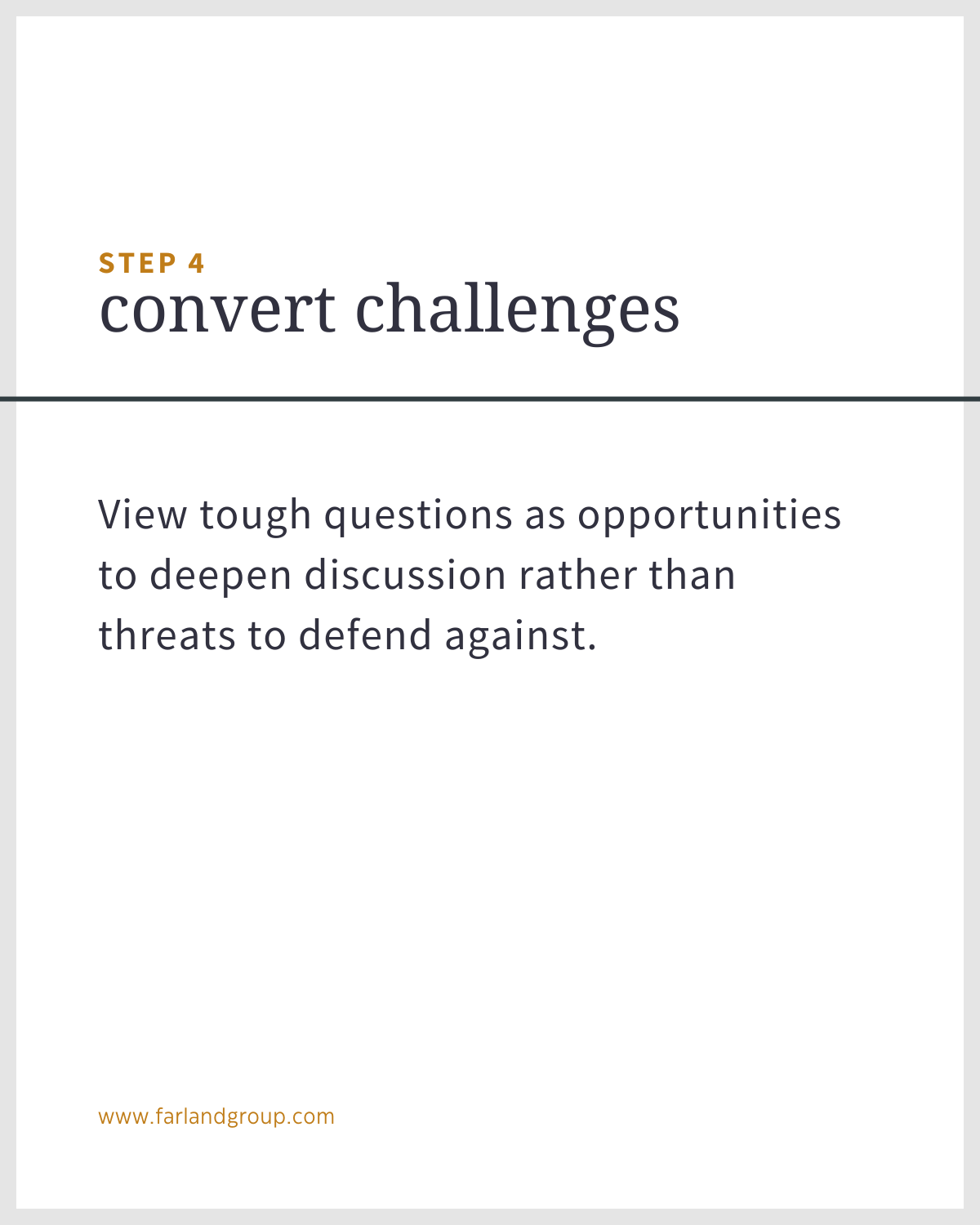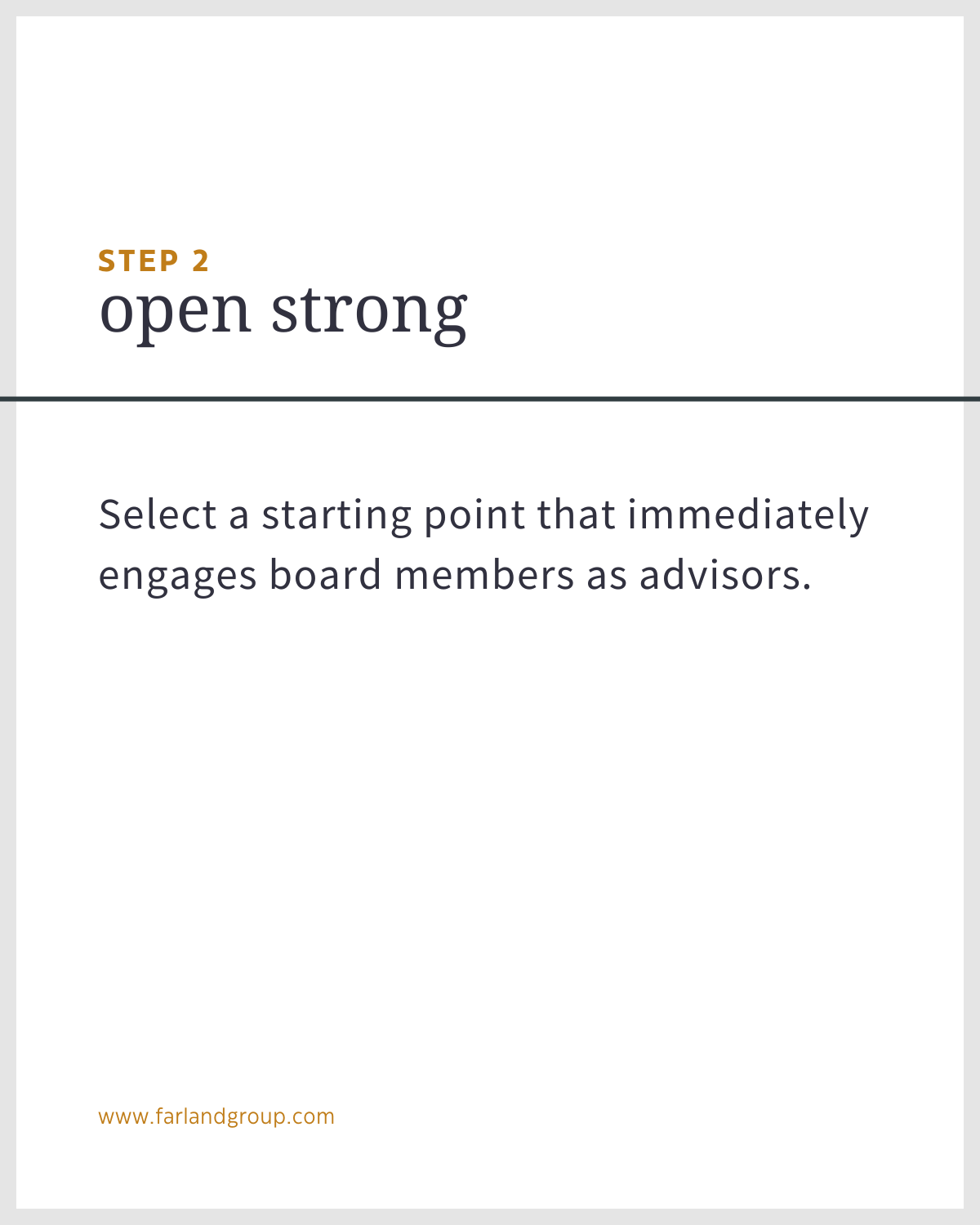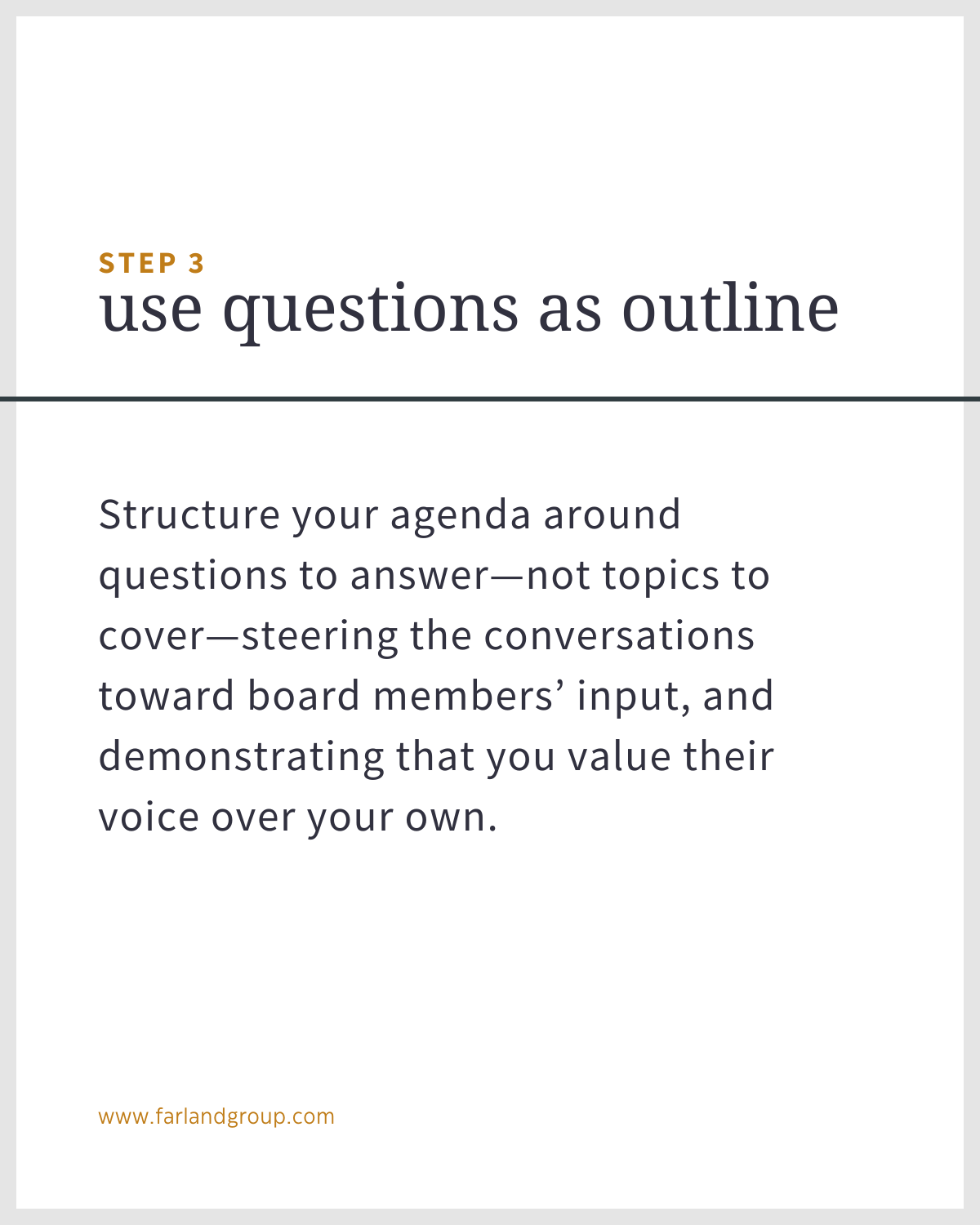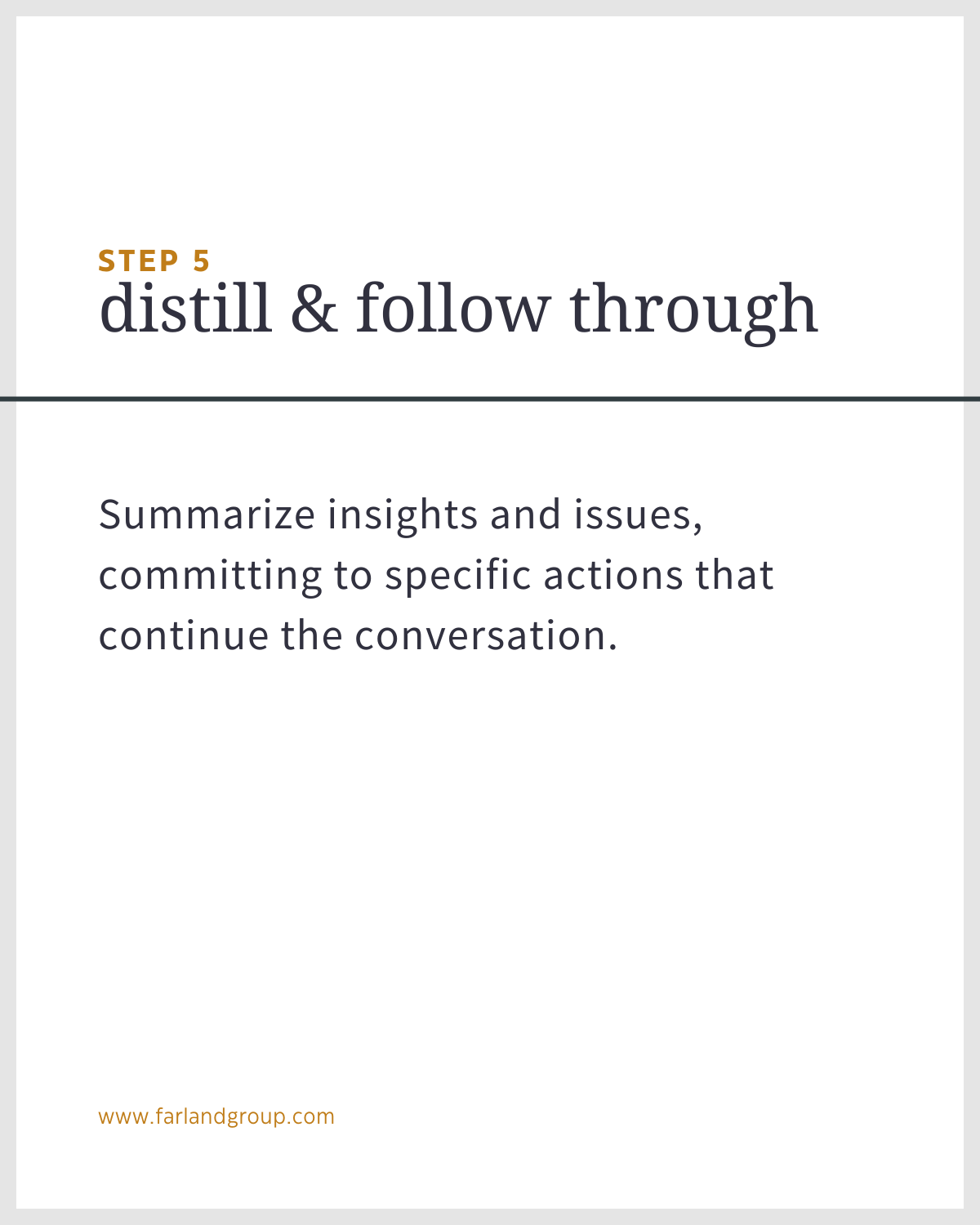From Defense to Dialogue: How to Handle Tough Questions in Customer Advisory Boards
In our Executive's Guide to Customer Advisory Board Discussions, we introduced a 5-step framework to transform customer advisory board presentations into productive discussions.
Our previous posts explored how to frame your discussion and choose the right opening. We also covered how to structure your time around questions rather than topics.
Now, we'll focus on a critical skill that can make or break your advisory board session: handling challenging questions.
Welcome Scrutiny as a Sign of Success
The point of an advisory meeting is to welcome scrutiny, not avoid or defend against it. Challenging questions are a sign of success! They indicate that your board members are engaged, thinking critically, and taking their advisory role seriously.
Anticipating these questions will help you answer them candidly and effectively, and use them to get additional, helpful counsel tied to your original purpose.
Tough Questions that Board Members Ask (and How to Handle Them)
Here are five questions we hear frequently, with examples of how you might respond. Use them to brainstorm and craft an opening that will work for you. (Stay tuned for more examples in a future post.)

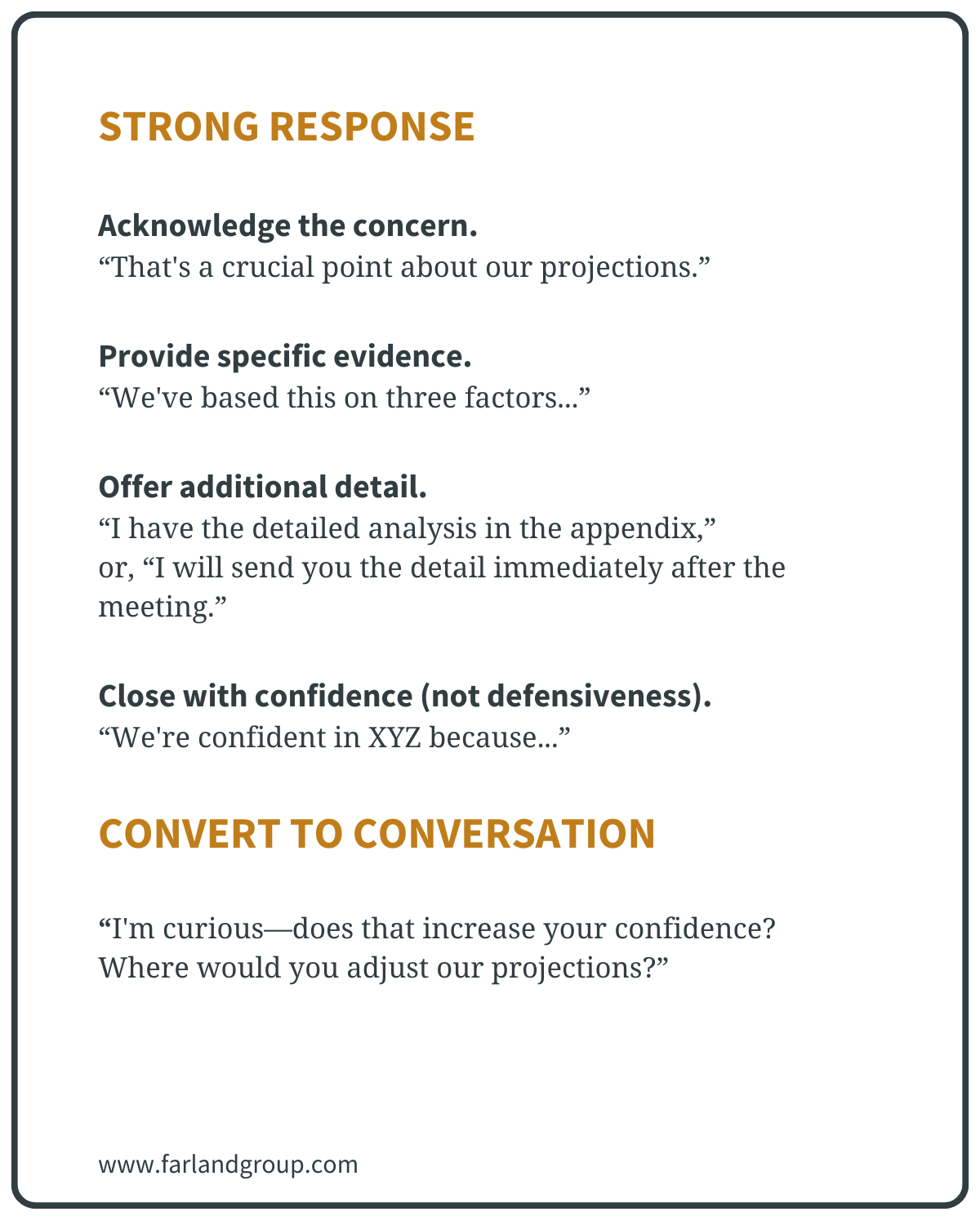

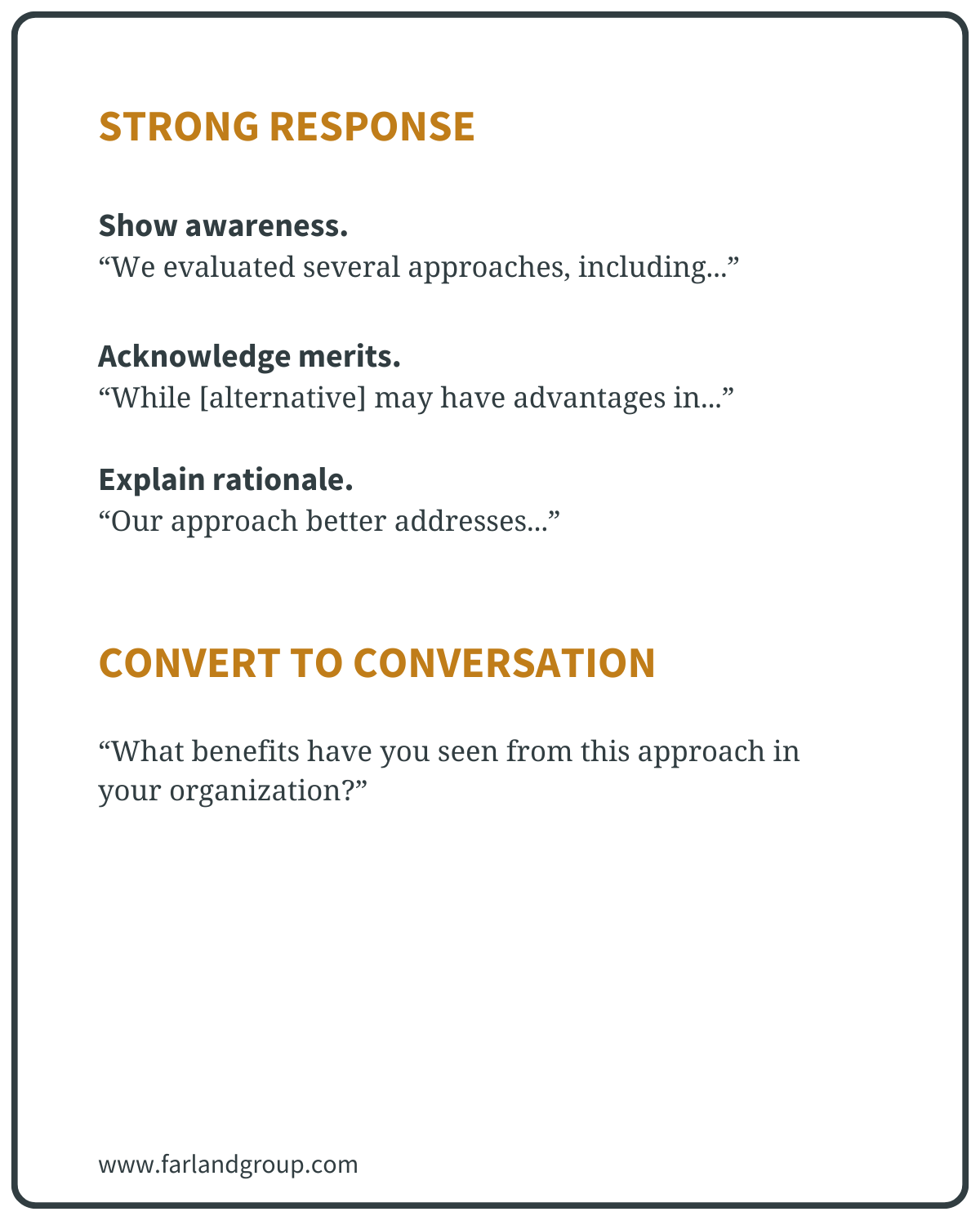





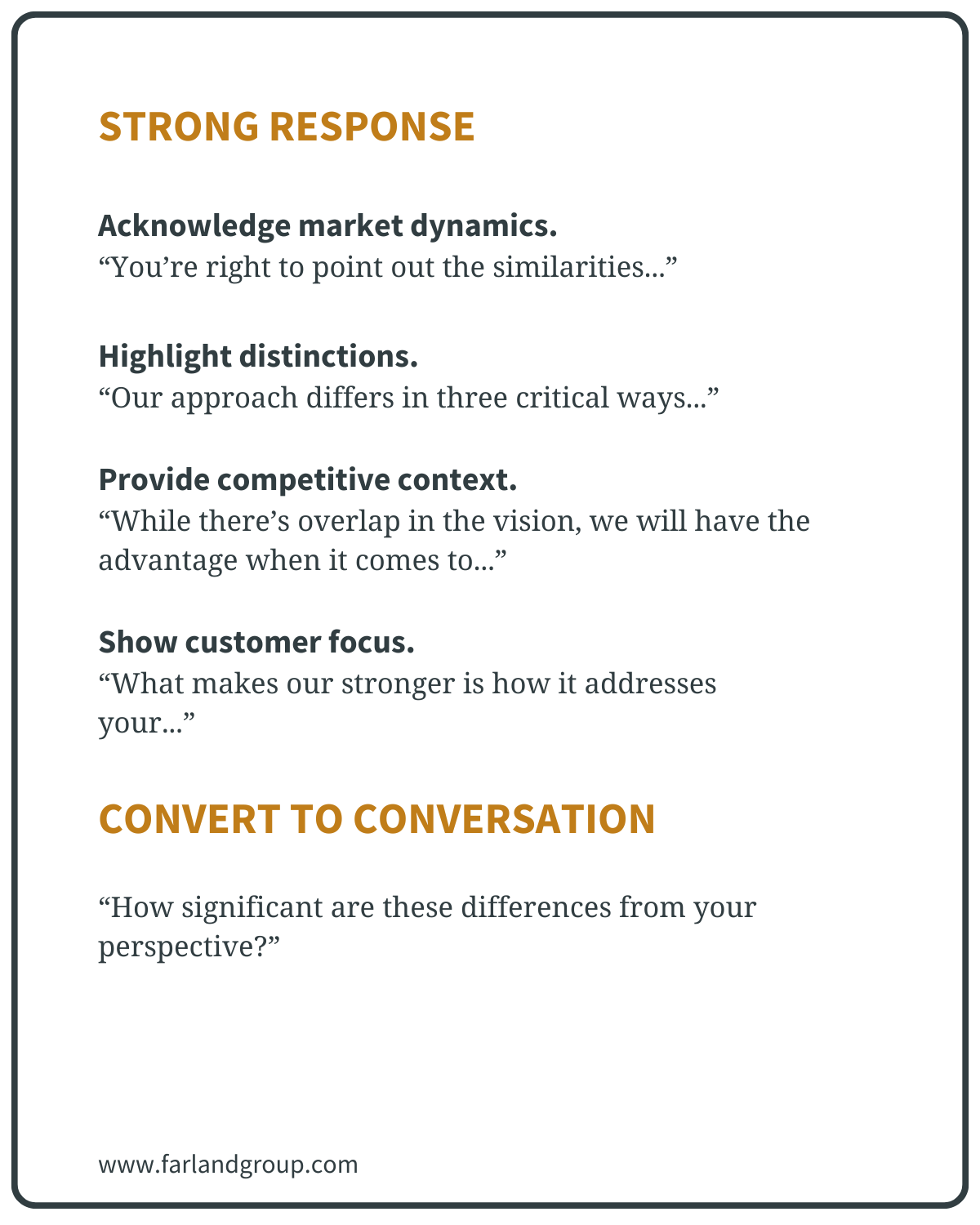
The Art of Converting Challenges to Conversations
Notice the pattern in the responses:
Acknowledge the validity of the question
Respond with specific, substantive information
Convert the exchange from a one-way answer to a two-way dialogue
The conversion step is what distinguishes advisory board discussions from presentations or interrogations. After providing your response, use phrases like:
"I'm curious about your perspective on..."
"What has your experience been with..."
"How would you approach this challenge?"
"What factors would you weigh differently?"
By turning your answer into a new question, you maintain the collaborative dynamic that makes advisory boards valuable.
Preparing for Challenging Questions
To anticipate challenging questions before your advisory board meeting:
Identify vulnerabilities by surveying colleagues or reviewing board feedback at past meetings and in pre-meeting preparation
Draft responses to likely questions using the acknowledge-respond-convert pattern
Practice delivering these responses confidently but not defensively
Prepare supporting data, keeping it accessible rather than overwhelming
Remember that even the toughest board members rarely ask difficult questions to embarrass you—they're fulfilling their role: trying to help strengthen your approach by identifying potential weaknesses or blind spots.
Moving Forward: Synthesizing and Confirming Next Steps
Handling challenging questions effectively builds credibility with your advisory board and extracts maximum value from their expertise. In our final post in this series, we'll explore how to conclude your advisory board discussions by synthesizing the advice you’ve heard and confirming specific follow-up actions.
By mastering this complete framework—from framing discussions and choosing strategic openings to structuring around questions and handling challenges—you'll transform your advisory board from a passive audience into active partners.

